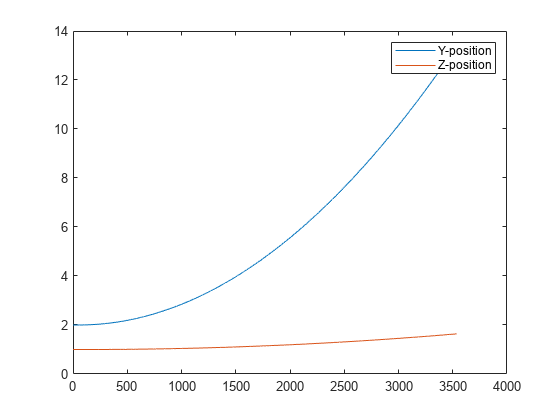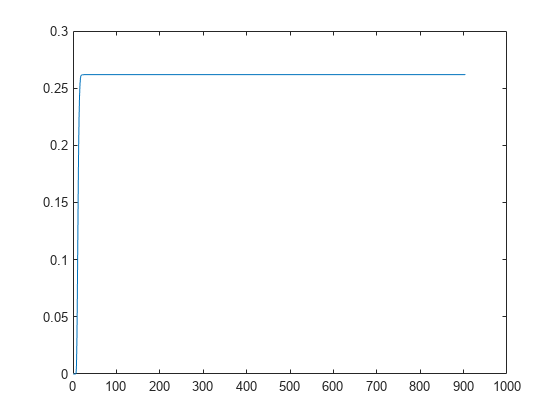This example shows how to use the multirotor guidance model to simulate the change in state of a UAV due to a command input.
Create the multirotor guidance model.
Create a state structure. Specify the location in world coordinates.
Specify a control command, u, that specified the roll and thrust of the multirotor.
Create a default environment without wind.
Compute the time derivative of the state given the current state, control command, and environment.
Simulate the UAV state using ode45 integration. The y field outputs the multirotor UAV states as a 13-by-n matrix.
Plot the change in roll angle based on the simulation output. The roll angle (the X Euler angle) is the 9th row of the simOut.y output.
Plot the change in the Y and Z positions. With the specified thrust and roll angle, the multirotor should fly over and lose some altitude. A positive value for Z is expected as positive Z is down.
You can also plot the multirotor trajectory using plotTransforms. Create the translation and rotation vectors from the simulated state. Downsample (every 300th element) and transpose the simOut elements, and convert the Euler angles to quaternions. Specify the mesh as the multirotor.stl file and the positive Z-direction as "down". The displayed view shows the UAV translating in the Y-direction and losing altitude.




